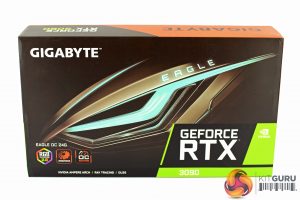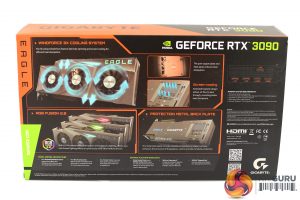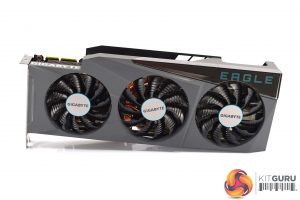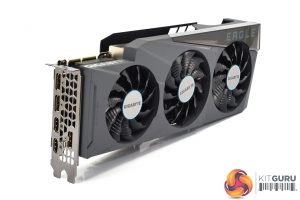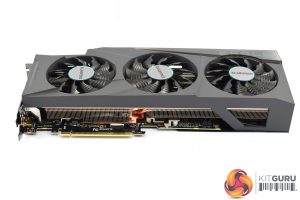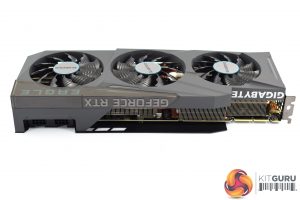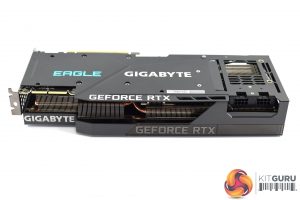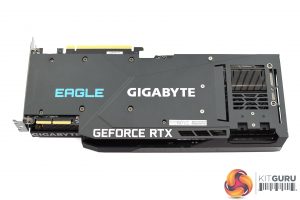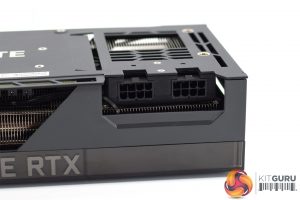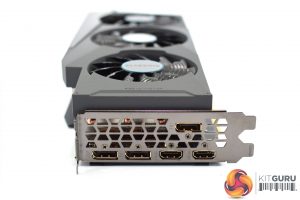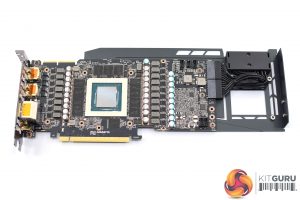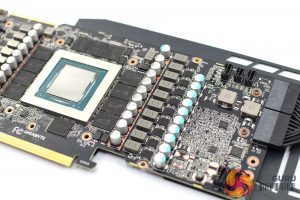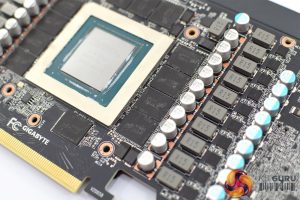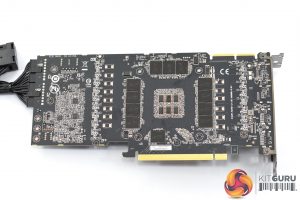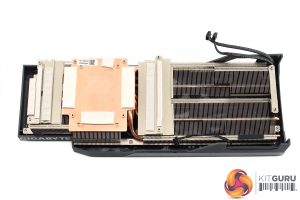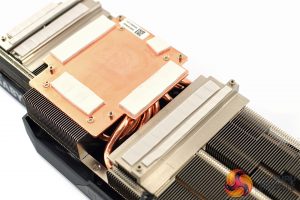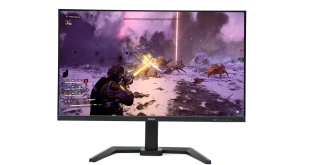The Gigabyte RTX 3090 Eagle OC ships in a dark box, with the Eagle logo and branding visible on the front.
On the back Gigabyte highlights a few key areas of the card design, including its RGB lighting, triple-fan cooler and backplate.
The only included accessory is a small quick start guide.
For the graphics card itself, as we alluded to on the first page, this is the exact same cooler and shroud as per the RTX 3080 Eagle OC. This means the card uses a relatively stripped-back design, with a mostly grey plastic shroud. We can also note the translucent area which is home to the Eagle brand name.
As for the cooler, this is another of Gigabyte's Windforce 3X designs. Of course, it's a triple-fan solution, with the fan closest to the I/O bracket measuring 80mm, while the other two are 90mm. The central fan also spins in reverse, which is designed to reduce airflow turbulence.
It's certainly a big card. While we don’t have official dimensions from Gigabyte at the time of writing, my measurements put the overall size at approximately 32cm x 13cm x 5.5cm. It requires three expansion slots in your system.
The front side of the card's shroud is home to the Gigabyte and GeForce RTX logos, and these can also be found on the full-length metal backplate, with an additional Eagle logo printed in blue. Additionally, we can get a look at the two small NVLink fingers positioned next to the I/O bracket. RTX 3090 is the only Ampere GPU with SLI support.
We can also see a large cut-out in the backplate at the end of the card, allowing air to pass directly through the heatsink and out of the back of the card into your chassis.
Despite a rated TGP of 350W, Gigabyte has stuck with 2x 8-pin power connectors for the RTX 3090 Eagle OC. These can each provide 150W, while another 75W from the PCIe slot gives about 25W headroom for the card.
As for display outputs, the Eagle OC features three DisplayPort 1.4a connectors and two HDMI 2.1 ports.
In terms of its PCB, here we can note some differences compared to the RTX 3080 Eagle OC. The overall design is the same, but the power delivery has been beefed up to a 15+4 configuration. The RTX 3080 Eagle OC uses a 13+4 VRM.
Gigabyte is still using power extensions for the 8-pin PCIe connectors, as these are not directly soldered onto the PCB.
As for the memory, given the RTX 3090 sports 24GB GDDR6X, manufacturers needed to find space for 24 memory modules, so we have 12 on either side of the PCB. These are of course from Micron, and each module is labelled D8BGX – meaning 19.5Gbps memory.
Lastly, the Eagle OC's cooler is unchanged compared to the RTX 3080 model. That means it uses two fin stacks, with a total of 7x 6mm copper heatpipes. The GPU contacts directly with a copper plate, as do the memory modules (via thermal pads). Smaller plates are also used to contact with the VRM and MOSFETs, again via thermal pads.
Be sure to check out our sponsors store EKWB here
 KitGuru KitGuru.net – Tech News | Hardware News | Hardware Reviews | IOS | Mobile | Gaming | Graphics Cards
KitGuru KitGuru.net – Tech News | Hardware News | Hardware Reviews | IOS | Mobile | Gaming | Graphics Cards


